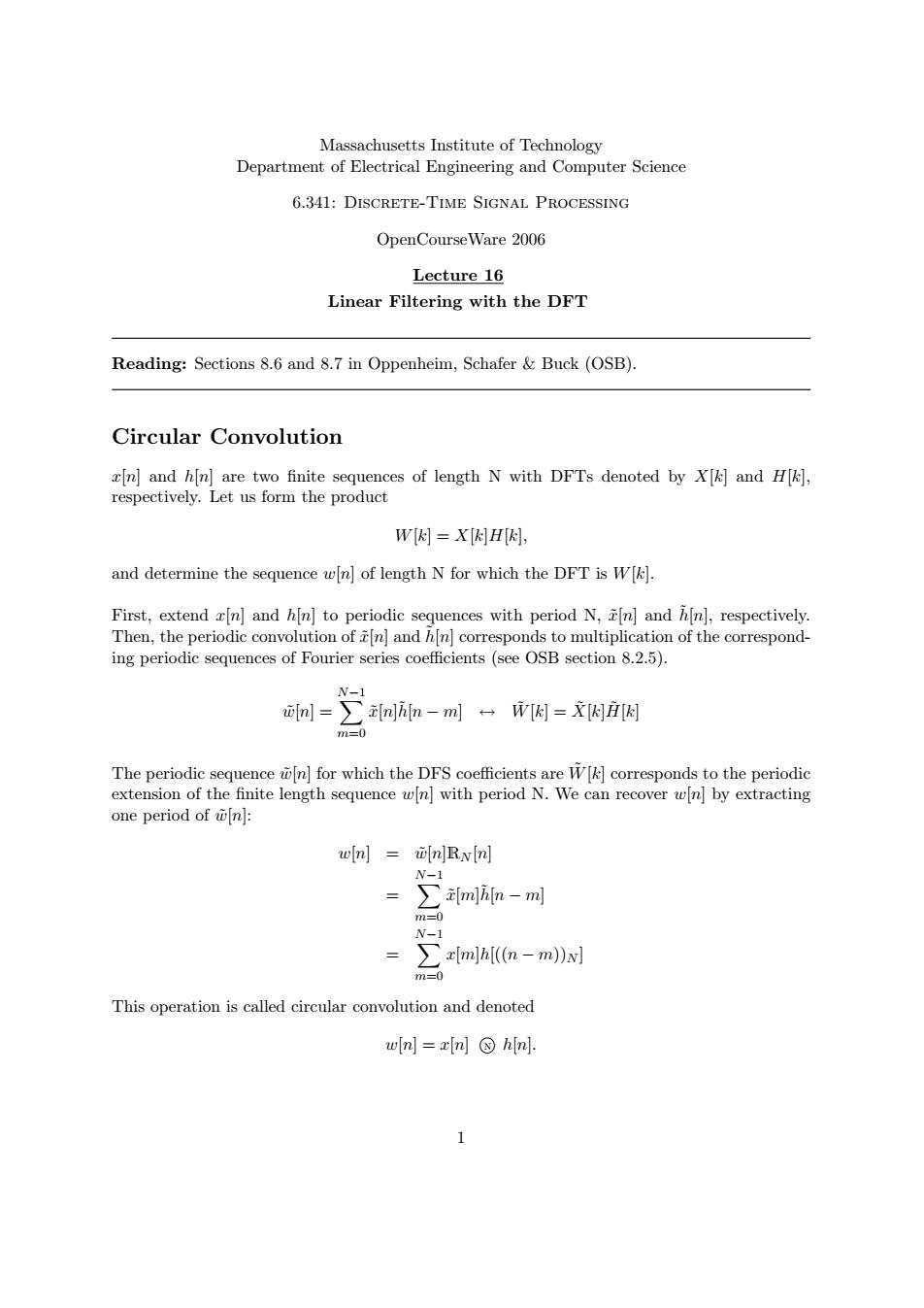正在加载图片...

Massachusetts Institute of Technology Department of Electrical Engineering and Computer Science 6.341:DISCRETE-TIME SIGNAL PROCESSING OpenCourse Ware 2006 Lecture 16 Linear Filtering with the DET Reading:Sections 8.6 and 8.7 in Oppenheim,Schafer Buck (OSB). Circular Convolution xIn]and h[n]are two finite sequences of length N with DFTs denoted by X[k]and H[k], respectively.Let us form the product W [k=X [k]H[k], and determine the sequence wn]of length N for which the DFT is W[k]. First,extend x[n]and h[n]to periodic sequences with period N,n]and hin],respectively. Then,the periodic convolution of n]and hn corresponds to multiplication of the correspond- ing periodic sequences of Fourier series coefficients(see OSB section 8.2.5). N-1 m=∑mn-m[因=X因因 m=0 The periodic sequence wn]for which the DFS coefficients are W[k]corresponds to the periodic extension of the finite length sequence wln]with period N.We can recover w[n]by extracting one period of wn]: win]wn RNIn] N-1 imlhin-m] m=0 N ∑mh(n-m)N m=0 This operation is called circular convolution and denoted wln]=xin]hinj. 1� Massachusetts Institute of Technology Department of Electrical Engineering and Computer Science 6.341: Discrete-Time Signal Processing OpenCourseWare 2006 Lecture 16 Linear Filtering with the DFT Reading: Sections 8.6 and 8.7 in Oppenheim, Schafer & Buck (OSB). Circular Convolution x[n] and h[n] are two finite sequences of length N with DFTs denoted by X[k] and H[k], respectively. Let us form the product W[k] = X[k]H[k], and determine the sequence w[n] of length N for which the DFT is W[k]. First, extend x[n] and h[n] to periodic sequences with period N, x h ˜[n] and [n], respectively. ˜ Then, the periodic convolution of x h ˜[n] and [n] corresponds to multiplication of the correspond- ˜ ing periodic sequences of Fourier series coefficients (see OSB section 8.2.5). N−1 w ˜ ˜ ˜ ˜ [n] = � ˜ ˜[ x n]h[n − m] ↔ W[k] = X[k]H[k] m=0 The periodic sequence ˜[n] for which the DFS coefficients are w W˜ [k] corresponds to the periodic extension of the finite length sequence w[n] with period N. We can recover w[n] by extracting one period of w˜[n]: w[n] = w˜[n]RN [n] N−1 ˜ = � x ˜ [m]h[n − m] m=0 N−1 = � x[m]h[((n − m))N ] m=0 This operation is called circular convolution and denoted w[n] = x[n] N h[n]. 1